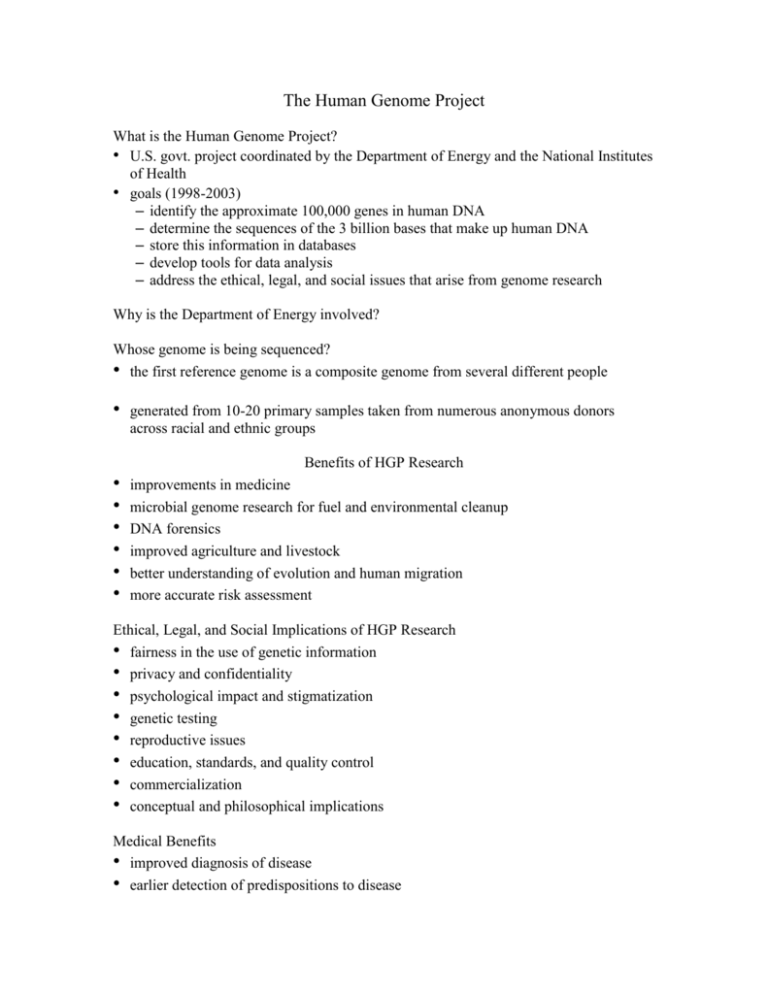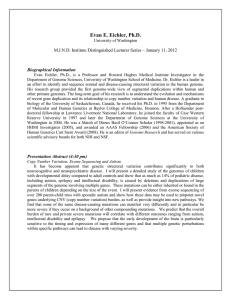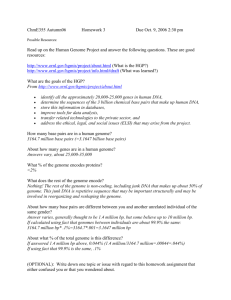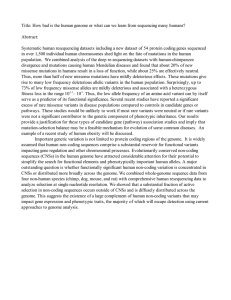The Human Genome Project
advertisement

The Human Genome Project What is the Human Genome Project? • U.S. govt. project coordinated by the Department of Energy and the National Institutes of Health • goals (1998-2003) – identify the approximate 100,000 genes in human DNA – determine the sequences of the 3 billion bases that make up human DNA – store this information in databases – develop tools for data analysis – address the ethical, legal, and social issues that arise from genome research Why is the Department of Energy involved? Whose genome is being sequenced? • the first reference genome is a composite genome from several different people • generated from 10-20 primary samples taken from numerous anonymous donors across racial and ethnic groups Benefits of HGP Research • • • • • • improvements in medicine microbial genome research for fuel and environmental cleanup DNA forensics improved agriculture and livestock better understanding of evolution and human migration more accurate risk assessment Ethical, Legal, and Social Implications of HGP Research • fairness in the use of genetic information • privacy and confidentiality • psychological impact and stigmatization • genetic testing • reproductive issues • education, standards, and quality control • commercialization • conceptual and philosophical implications Medical Benefits • improved diagnosis of disease • earlier detection of predispositions to disease • • • • rational drug design gene therapy and control systems for drugs pharmacogenomics “personal drugs” organ replacement Microbial Genome Research • new energy sources (biofuels) • environmental monitoring to detect pollutants • protection from biological and chemical warfare • safe, efficient toxic waste cleanup DNA Forensics • identify potential suspects at crime scenes • exonerate wrongly accused persons • identify crime and catastrophe victims • establish paternity and other family relations • identify endangered and protected species as an aid to wildlife officials (prosecution of poachers) • detect bacteria and other organisms that may pollute air, water, soil, and food • match organ donors with recipients in transplant programs • determine pedigree for seed or livestock breeds • authenicate consumables such as caviar and wine Agriculture and Livestock • disease-, insect-, and drought-resistant crops • healthier, more productive, disease-resistant farm animals • more nutritious produce • biopesticides • edible vaccines incorporated into food products • new enviornmental cleanup uses for plants like tobacco Evolution and Human Migration • use germline mutations in lineages to study evolution • study migration of different population groups based on female genetic inheritance • study mutations on the evolutionarily stable Y chromosome to trace lineage and migration • compare breakpoints in the evolution of mutations with ages of populations and historical events Risk Assessment • assess health damage and risks caused by radiation exposure, including low-dose exposures • assess health damage and risks caused by exposure to mutagenic chemicals and cancer-causing toxins • reduce the likelihood of heritable mutations











